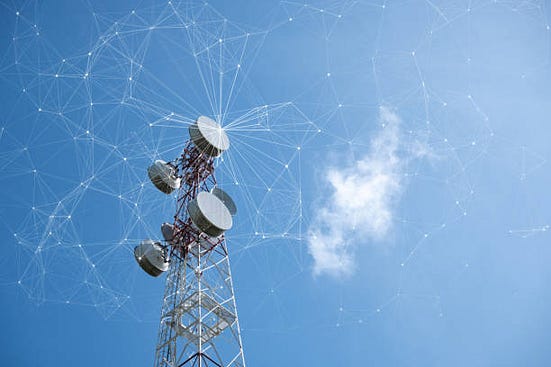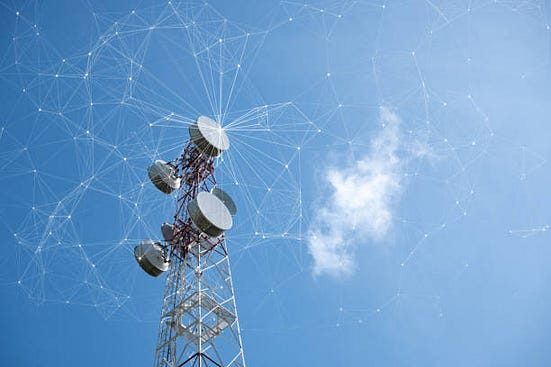Power of 5G |
4 min read
How the Next Generation of Wireless Technology is Set to Transform Communication and Connectivity?
In recent years, 5G has been making headlines as the next big thing in wireless technology. As the successor to 4G, 5G promises to deliver faster speeds, lower latency, and greater bandwidth, making it possible to support a range of new applications and services that were previously not possible. In this article, we will explore the potential of 5G and how it is set to transform communication and connectivity.
What is 5G?

5G stands for the fifth generation of wireless technology. It is the next step in the evolution of mobile networks, offering significant improvements over its predecessor, 4G. One of the key features of 5G is its ability to provide faster data transfer speeds, lower latency, and greater capacity. This makes it possible to support a range of new applications and services that were previously not possible on 4G networks.
Faster Speeds

One of the most significant benefits of 5G is its faster speed. 5G promises to deliver speeds up to 10 times faster than 4G, with some estimates suggesting it could reach up to 100 times faster in the future. This means that downloading large files or streaming high-quality video will be much quicker, and users will experience less buffering and lag time. This is a significant improvement over 4G, which can be slow and unreliable, especially in crowded areas.
Lower Latency

Latency refers to the delay between when data is sent and received. With 5G, latency is expected to be significantly reduced, with estimates suggesting it could be as low as one millisecond. This means that communication between devices will be nearly instant, making it possible to support applications that require real-time interaction, such as remote surgery or autonomous vehicles.
Greater Capacity
Another significant advantage of 5G is its greater capacity. 5G networks will be able to support a much larger number of devices, with estimates suggesting up to one million devices per square kilometer. This is a significant improvement over 4G, which can become congested in crowded areas, resulting in slow speeds and dropped connections. The greater capacity of 5G will make it possible to support the growing number of connected devices in the world, from smart homes and cities to the Internet of Things (IoT).
Transforming Communication and Connectivity
The benefits of 5G go beyond faster speeds, lower latency, and greater capacity. 5G has the potential to transform communication and connectivity in ways that were previously not possible.
Remote Work and Collaboration
The COVID-19 pandemic has accelerated the trend towards remote work and collaboration, and 5G is set to take this to the next level. With faster speeds and lower latency, remote workers will be able to access and share large files and data in real-time, making collaboration more efficient and effective. 5G will also enable new forms of remote work, such as remote surgery and telemedicine, allowing medical professionals to provide care to patients from a distance.
Smart Cities and Infrastructure
Smart cities and infrastructure are set to benefit significantly from 5G. With the greater capacity and speed of 5G, cities will be able to support a range of smart technologies, from traffic management and public safety to energy management and waste management. This will result in more efficient and sustainable cities, with better services and amenities for residents.
Virtual and Augmented Reality
Virtual and augmented reality (VR/AR) are set to become more mainstream with the arrival of 5G. With faster speeds and lower latency, users will be able to experience more immersive and interactive VR/AR applications and services. This will open up new opportunities for education, entertainment, and even remote travel, allowing
users to experience different parts of the world or historical events from the comfort of their own homes.
Autonomous Vehicles
Autonomous vehicles (AVs) are another area that will benefit from 5G. With its low latency and high bandwidth, 5G will enable real-time communication between AVs and other connected devices on the road. This will result in safer and more efficient transportation, with fewer accidents and reduced congestion.
Challenges and Considerations
While 5G has the potential to transform communication and connectivity, it also presents a number of challenges and considerations. One of the main challenges is the need for significant infrastructure investment. 5G requires a dense network of small cells and fiber optic cables, which can be costly and time-consuming to deploy.
There are also concerns around the potential health risks of 5G. While there is currently no scientific evidence to suggest that 5G is harmful, some people are concerned about the effects of exposure to radio waves and electromagnetic fields.
Another consideration is the potential for 5G to exacerbate the digital divide. While 5G promises to deliver faster speeds and greater capacity, it may not be accessible to everyone, particularly those in rural or low-income areas. This could result in a widening of the digital divide, with some people unable to access the benefits of 5G.


